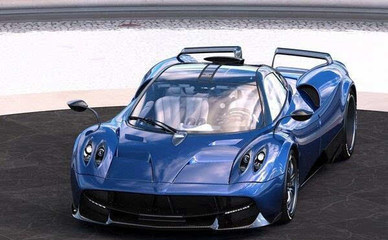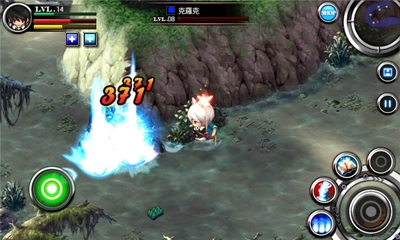本报汽车专栏作家丹·尼尔说,由当代达芬奇设计的帕加尼Huayra美丽如一件雕塑作品。它是一道视觉盛宴,是一架地面上的战斗机。
Huayra原型车目前完成了一轮100万公里的测试验证周期。它将于2013年中在美国上市。
Dan Neil/The Wall Street Journal
《华尔街日报》汽车专栏作家丹·尼尔说,“这款售价120万美元(约763万元人民币)的超级跑车采用鸥翼式车门,性能强如漫画中的神车,是一件艺术杰作、一架地面上的战斗机。在我开过的所有车中,它能以最激进的方式从静止加速至225英里/小时(约362公里/小时)。”
Dan Neil/The Wall Street Journal
Huayra(测试车型售价为120万美元)重约1,406公斤,马力超过700 匹,扭矩为1,000牛米,从静止加速到186英里/小时(约300公里/小时)需时18秒。
Dan Neil/The Wall Street Journal
“Huayra凭借四个电脑控制的电动操纵面达到空气动力学稳定,这四个操纵面为:车后缘的两个可升降尾翼、与车头部融为一体的两个可升降鼻翼。”
Dan Neil/The Wall Street Journal
“Huayra宛如一件美丽、平和的雕塑作品,又像它的名字所代表的“风”那样拥有自然的伟力。”
Dan Neil/The Wall Street Journal
Huayra是南美安第斯山区一位风神的名字。57岁的阿根廷设计师霍拉肖·帕加尼(Horatio Pagani) 打造了这款帕加尼Huayra。他的偶像是达芬奇(Leonardo da Vinci)。
Dan Neil/The Wall Street Journal
帕加尼还设计过与Huayra“大异其趣”的Zonda车型。
Dan Neil/The Wall Street Journal
最终的作品是如此与众不同,如此魅力四射,如此尽善尽美。Huayra展现的不仅是帕加尼的设计能力,更是他引领和启发他人的能力。”
Dan Neil/The Wall Street Journal
尼尔形容:“当你像一个逃亡的银行劫匪一样在意大利乡间奔袭,挥手摘掉面罩的同时耳边响起涡轮废气泄压阀爆发出撕裂般的轰鸣声,宛如天使在半空相撞,但好像总有一只灵巧而无形的手将Huayra紧紧压在路面上。”
Dan Neil/The Wall Street Journal
“Huayra是近些年来汽车业最伟大的直觉式工程,应当写进认知科学教科书中。”
Dan Neil/The Wall Street Journal
Huayra的引擎和MHG Fahrzeugtechnik出品的液压成形钛合金排气系统均产自德国。
Dan Neil/The Wall Street Journal
Huayra配备了英国产XTRAC横置七速单离合手自一体变速箱。
Dan Neil/The Wall Street Journal
帕加尼汽车公司位于意大利摩德纳。
Dan Neil/The Wall Street Journal
“四个操纵面可独立或联合作用,通过改变张开角度来调节整车的空气动力学平衡点,从而补偿车辆高速行驶时产生的升力以及来自各个方向的惯性冲击力。车头鼻翼最张开角度为20度,尾翼的最大张开角度为40度。”
Dan Neil/The Wall Street Journal
“除了碳纤维底盘和车身外壳以外,其他几乎每一个部件都来自距摩德纳100公里内的供应商,其中包括高应力铝合金锻件悬挂摇臂、单簧管式样的合金车载空调开关、定制的倍耐力(Pirellis)轮胎,车座间抛光铝制外露式序列式换挡杆导向槽。帕加尼十分倚重这些供应商。”
Dan Neil/The Wall Street Journal
Huayra的局部特写。
Dan Neil/The Wall Street Journal
“Huayra独特的复古科幻风格仪表盘。”
Dan Neil/The Wall Street Journal
前车灯。
Dan Neil/The Wall Street Journal
手套箱上的帕加尼Huayra标志。
Dan Neil/The Wall Street Journal
Huayra原型车目前完成了一轮100万公里的测试验证周期。它将于2013年中在美国上市。
Dan Neil/The Wall Street Journal
《华尔街日报》汽车专栏作家丹·尼尔说,“这款售价120万美元(约763万元人民币)的超级跑车采用鸥翼式车门,性能强如漫画中的神车,是一件艺术杰作、一架地面上的战斗机。在我开过的所有车中,它能以最激进的方式从静止加速至225英里/小时(约362公里/小时)。”
超级跑车“帕加尼风神”
Dan Neil/The Wall Street Journal
帕加尼风神
帕
加尼汽车公司(Pagani Automobili)有点奇怪,它位于意大利超级跑车之乡摩德纳(Modena)的Via dell'Artigianato大街(如果我没理解错,意思应该是“工艺之街”),规模只有捷飞络(Jiffy Lube)汽车快速保养连锁服务店那么大。我在帕加尼的工场呆了两天,看到的人加起来不超过20个:有负责媒体宣传的卢卡(Luca),几个前台人员,几名工人,几个小孩,还有就是经常穿着尖得能踢死人的米兰高跟鞋啪嗒啪嗒地走过打蜡地板的帕加尼太太(Mrs. Pagani)。公司其他的人都上哪儿去了?

Dan Neil/The Wall Street Journal
图片:天价杰作帕加尼Huayra
其他的人其实只有一个,那就是奥拉西欧·帕加尼(Horacio Pagani),一位56岁、性情温和的阿根廷设计师、碳复合材料专家以及某领域的学者,至于是哪种领域,恕我实在是描述不出来。事实上,我倒是想跟临床神经学家好好谈谈帕加尼这个案例:他没有接受过空气动力学和工程学的正规教育,是一个不会说英语的欧洲商人,一个不知道PDF为何物的设计师,却能凭空设计出一款名为“帕加尼风神”(Pagani Huayra)的售价120万美元的鸥翼超级跑车,一台彷佛从漫画书中走出来的表现惊人的艺术杰作,一架飞行高度为零的空中战机。它从静止到时速225英里(362公里)的加速过程,是我从未在其他任何一辆车上体验过的。
如果允许我旧词新用的话,风神(Huayra的发音为WHY-ra,意指“安第斯风之神”)堪称是一款“气垫汽车”(aeromobile)。
帕加尼作品的大名对粉丝来说可谓如雷贯耳。他设计的第一台跑车“风之子”(Zonda)一战成名,该车搭载手工打造的奔驰(Mercedes-Benz)AMG V12中置发动机,利用碳纤维、钛金属和铝合金制造出超轻车身。最终版的“风之子”R Evolution配备7.3升发动机,马力高达800匹,公司一直将其作为一款俱乐部赛车,最近在21公里的纽博格林(Nurburgring)赛道上跑出6分47秒的惊人成绩,比法拉利Enzo赛车还要快37秒。
Dan Neil/The Wall Street Journal
与“风之子”相比,“风神”是另一种猛兽。它重约3,100磅(1.4吨),马力700+,扭矩737磅英尺(约1000牛顿米),从静止加速到每小时186英里(约300公里)只需18秒左右。让人着迷的是两款车之间的美学跨越。“风之子”看上去就像一台法国勒芒(Le Mans)赛道上的原型赛车的居家版,一位束着碳纤维紧身内衣的耀眼交际花,车身线条就像刺客手中致命的钢琴线,狂野不羁而不是美丽动人。“风神”则外形优美和谐、雕塑感十足、光彩夺目、具有风精灵一般的气质。然而,外在的视觉盛宴并没有损及“风神”的任何内在机械品质,也没有给时速200英里(322公里)的技术要求带来任何不利影响。很显然,“风神”的外型几乎是从帕加尼的脑袋里直接蹦出来的,增之一分则多,减之一分则少。
1983年,帕加尼来到意大利,在兰博基尼汽车公司(Lamborghini)当技师,他十分崇拜达芬奇(Leonardo da Vinci)。当然,达芬奇的优势在于他知道自己设计的直升机不可能被造出来,至少有生之年不可能去驾驶它;但帕加尼不同,他得让自己设计的闪亮汽车通过美国交通部(U.S. Department of Transportation)的审核。
你要知道,我见过许多百万美元级的手工打造的超级跑车,见识过V12发动机的全力爆发,听过双涡轮引擎的超音速嘶吼,见过整齐划一排列的激光刻字钛金属螺栓,见过碳化钛底盘结构、镀金铝合金推杆悬架臂、黑姆阻燃聚酯纤维接头的铬钼合金发动机托架,以及如钟表制作般一丝不苟的精密机械加工。布加迪EB110 (Bugatti EB110)、科尼赛克(Koenigsegg)、世爵(Spyker)等超级跑车,我都领略过其风采。
然而,所有这些汽车都无法达到“风神”的高度。听听这个:通过由四台电脑控制的电子驱动飞行控制界面──即位于汽车后缘、楔形车鼻以及前轮罩之间的升降机──“风神”能实现气动自平稳功能。各控制界面可独立运行,也可协同配合,迎角可变,前侧可达20度,后侧可达40度,动态调整汽车的空气动力平衡,减少前后颠簸、左右摇晃、头尾摆动和高速竖起等异动现象。
这意味着什么?也就是说,当你在意大利乡间像逃窜的银行劫匪一样开车狂奔时,“风神”的涡轮排气控制阀全力咆哮,震耳欲聋的气门爆炸声好似天使在空中相撞,但车子彷佛被一根看不见的灵巧手指牢牢按在地面上,毫无颠簸之感。你急速上山,来到一个角度很大的右弯,频点刹车,紧握方向盘,减速通过,此时右侧平衡器开始工作,给车身右侧的Pirellis宽幅轮胎施加更多的下压力。给油,呼啸……非常好,1.5G的侧向加速度完美呈现。当车身摆正,速度提升,方向盘自动矫正以减少拖拽偏移。这辆车凶猛异常,能带来如勒芒赛道般真实的赛车感受,让我的脖子紧张得都几乎僵硬。
此外,“风神”有一个液压启动的动态车身高度调节系统,能在急刹车时抬高车子前端,减少重量转移的影响,给前翼子板带来更多的悬置空间以增加下压力。
当然,我还有很多问题不明白。飞行控制CPU、紧急启动装置和前端车身调节器等系统能否及时处理来自汽车加速表、传感器和平衡程序的各种信号?气动调节装置在时速50-175英里(80-282公里)的区间运行,此时一切都在瞬间发生,系统的一点点滞后都可能导致汽车失去平衡。是谁写的程序算法,是否经过严格彻底的检验?搭载气动调整装置就其复杂性和重量因素而言是否值得?为证明“风神”没有夸大其辞,我需要大量的实验数据,并在法国蓝色海岸(Cote d'Azur)至少呆上一个月潜心研究。
帕加尼说,“风神”的原型车目前即将完成100万公里的测试和验证周期,计划于2013年中在美国上市。
让我们假设这辆车的性能一如广告宣传所述,那么这意味着两个客观可能性:一、“风神”是汽车近代历史上最伟大的创新之举,应该写进认知科学的教科书中;二、“风神”是一个沟通方面的杰作。
不管怎么说,帕加尼并非独自一个人完成“风神”的设计工作。发动机和液压成型的MHG Fahrzeugtechnik钛合金排气装置在德国制造,七速横置单碟Xtrac手自一体双离合器变速箱在英国制造,除底盘和车身以外,几乎每一个零部件都来自于摩德纳100公里以内的供应商,如阿维昂纳尔铝合金(Avional)锻造而成的悬架摇臂,外型奇特如同单簧管的合金气候模式切换装置,定制的Pirellis轮胎,座位间的铣削铝合金序列变速门等。帕加尼对这些零部件供应商的依赖度非常高。
Dan Neil/The Wall Street Journal
帕加尼风神局部
不过,帕加尼连电子邮件都不太爱用,而是要求跟供应商和习惯用鼠标的工程师们直接面对面传达自己的想法,他的有些主意看起来一定很不寻常,甚至有些奇怪,比如椭圆形的Pagani商标在车内各个细部呈现和再呈现的方式,怀旧式未来科幻感的古怪仪表盘,看起来就像是从电影《飞侠哥顿》(Flash Gordon)中邪恶角色“无情的明”(Ming the Merciless)的超级摩托艇上直接搬过来的。
不过,最终打造出的“风神”如此独一无二,如此魅力十足,如此特立独行,帕加尼已经不像是在设计一台车,而像是在导演一部令人浮想联翩的电影。
要造出这样一台车,似乎需要一支庞大的军队;但你环顾四周,看到的只有帕加尼本人。
帕加尼“风神”
价格:120万美元
动力系统:中置、双涡轮增压、中冷、干油池式润滑系统、48阀、6.0升、汽缸夹角60度、配备可变凸轮轴相位正时系统的V12引擎,带翘板变速开关和序列变速门的7速横置单碟手自一体变速箱,带限滑差速器的后轮式驱动。
马力/扭矩:马力700+ / 扭矩737磅英尺(约1,000牛顿米)
长度/重量:长181.2英寸(4.6米)/ 重3,100磅(1.4吨)
轴距:110.0英寸(2.794米)
0加速至60英里/小时(96公里/小时):3秒(估计值)
0加速至186英里/小时(300公里/小时):18秒(估计值)
极速:225英里/小时(362公里/小时)(估计值)
美国环境保护署(EPA)燃油经济性:10/14(百公里油耗约23.5升/16.8升)(估计值)
后备箱容积:3立方英尺(合0.085立方米)(估计值)
Gear & Gadgets: Pagani Huayra: If Da Vinci Made A Sports Car
Something strange is going on at Pagani Automobili. This is an outfit about the size of a Jiffy Lube, doing business on the Via dell'Artigianato -- 'the street of artisanal craftsmanship,' if I parse it right -- in Modena, the heart of Italian supercar country. In my two days at atelier Pagani, I did not see 20 souls. There's Luca, the press guy; a couple of receptionists; a few workers here, a couple of sons there; and Mrs. Pagani, who clicks across the polished floors in Milanese death heels. Where the hell is everybody?
Everybody else turns out to be one guy, Horacio Pagani, a mild, 56-year-old Argentinian designer, carbon composites expert and savant of some kind, though I'm at a loss to say which kind. In fact, I would like to discuss Mr. Pagani's case with a clinical neuroscientist. Here is a man who, without benefit of formal education in aerodynamics or engineering -- a European businessman who doesn't speak English, a designer who can't tell you what a PDF is -- has managed to pluck from the naked air of his intellect this thing called the Pagani Huayra, a gull-winged, $1.2 million hypercar, a painterly masterpiece with comic book performance, a zero-altitude fighter jet and about the most radical way to get from Point A to 225 mph I've ever driven.
The Huayra (pronounced WHY-ra, the name recalling an Andean wind spirit) is -- if I may rehabilitate an old word -- an aeromobile.
Mr. Pagani's work is well known to enthusiasts. His first car, the Zonda, set the template, with a hand-built Mercedes-Benz AMG V12 situated amidships and extreme weight savings driven by the use of carbon fiber, titanium and aluminum. The final version of the Zonda, the 7.3-liter, 800-hp R Evolution, which the company continues to build as a club racer, recently lapped the 21-kilometer Nurburgring in 6:47 minutes (for reference, 37 seconds faster than a Ferrari Enzo).
The Huayra (about 3,100 pounds, 700+ hp, 737 pound-feet of torque, 0-186 mph in about 18 seconds) is a very different creature, and among the things I think are of neuroscientific interest is the leap in aesthetics between the two cars. The Zonda looks like what it is, a domesticated Le Mans prototype, a hard-eyed courtesan in a carbon-fiber corset laced with an assassin's piano wire. Badass, not pretty. The Huayra is beautiful, sculptural, harmonious, enlightened, as elemental as the air for which it is named. Nothing upon which the eye may feast is sacrificed to machine logic or the technical demands of 200-mph speeds. And, apparently, the shape of the Huayra fell out of Mr. Pagani's head almost fully formed.
Mr. Pagani, who came to Italy in 1983 to work as a technician for Lamborghini, idolizes Leonardo da Vinci. Yeah, well, Leonardo had the advantage of knowing his helicopter would never be built. At least he knew he wasn't going to fly it. Mr. Pagani, by contrast, has to get his shimmering vision of a car past the U.S. Department of Transportation.
I want you to know I've seen a lot of million-dollar artisanal hypercars. I've seen massively overblown V12 engines before, heard the supersonic yelps of twin turbos in perdition. I've seen laser-etched monogrammed titanium bolts all torqued to face the same precise direction; I've seen carbon-titanium monocoques, gold-anodized aluminum pushrod suspension links, chrome-moly subframes with titanium heim-joints and obsessive, horological displays of precision machining. Seen it. Bugatti EB110, Koenigsegg, Spyker, to name a few.
None of those cars does what this car does. Get this: By virtue of four computer-controlled, electrically actuated flight control surfaces -- elevators at the trailing edge of the car and ailerons in the nose, between the front wheel wells -- the Huayra aero-stabilizes. The control surfaces, acting independently or together with a variable angle of attack of up to 20 degrees (front) and 40 degrees (rear), move the car's center of aerodynamic balance around to compensate for the forces of pitch, roll, yaw and high-speed lift.
What does that mean? It means that when you're ripping around the Italian countryside like a fleeing bank robber, with the Huayra's turbo wastegates exploding, tearing the veil with the sound of angels having a mid-air collision, there is somehow a deft, invisible finger holding the car to the pavement. You come up hard to a tight right corner, heading uphill. Brush the brakes and set the wheel and throttle. The right-side aileron and stabilizer deploy, squeezing more downforce onto the right-side, foot-wide Pirellis. Add gas. Huhhhh-h-h-h. . . . That's a nice, tidy 1.5-g cornering right there. As the car straightens out and gains speed, the airfoils automatically trim out to reduce drag. This car generates real, live, Le Mans-quality ground effects, and it is ferocious. My neck may never walk again.
Additionally, the Huayra has a hydraulically actuated, dynamic front ride-height system that raises the nose of the car during extreme braking, compensating for the weight transfer and giving the front wings more range of suspension travel through which to exert downforce.
Of course, I have many questions. How fast can these systems -- the flight-control CPU and actuators, the active front ride-height -- react to the welter of signals coming in from the car's various accelerometers, sensors and stability programming? The active aero works in a range between 50-175 mph, where things happen pretty fast. Even a small degree of system hysteresis -- lag, in other words -- could potentially unbalance the car. Who wrote these algorithms and how thoroughly have they been tested? Is the dynamic aero hardware worth its cost in complication and weight? In order to verify the Huayra's claims, I would need a lot of instrumented data and at least a month in the Cote d'Azur.
Mr. Pagani says that Huayra prototypes are currently wrapping up a million-kilometer testing and validation cycle before the car comes to the U.S. midyear, 2013.
But let's assume it all works as advertised. That presents two clinical possibilities: One, the Huayra is the greatest feat of intuitive engineering in the recent history of automobiles and it should be written up in some textbook of cognitive science. Or else it represents a masterpiece of communication.
After all, Mr. Pagani did not design this car alone. The engine and hydroformed titanium exhaust (MHG Fahrzeugtechnik) are built in Germany, the gearbox (transverse-mounted, single-clutch, seven-speed Xtrac automated manual) is built in Britain. Outside of the carbon chassis and body panels, virtually every piece of the car -- from the forged Avional suspension rockers to the crazy, clarinet-like alloy climate switches; from the custom-built Pirellis to the exposed, milled-aluminum sequential shiftgate between the seats -- comes from suppliers within about 100 kilometers of Modena, and Mr. Pagani has leaned on them heavily.
Still, Mr. Pagani, who is not even comfortable with email, had to convey exactly what he wanted to his suppliers and his mouse-wielding engineers, and some of his ideas must have seemed unusual, even odd. Note the way the thin ellipsoid of the Pagani logo is stated and re-stated in the cabin details, leading to the curious retro-sci-fi instrument panel, which looks like it was pried off of Ming The Merciless's jet ski.
And yet, the resulting car is so singular, so charismatic, so uncompromised, it seems less about Mr. Pagani's draftsmanship than his ability to direct and inspire.
It should have taken an army to build this car. But when you look around, all you see is the man himself.
PAGANI HUAYRA
Price, as tested: $1.2 million
Powertrain: mid-mounted twin-turbocharged, inter-cooled, dry-sump, 48-valve, 6.0-liter, 60-degree V12 with variable cam phasing; transverse-mounted, single-clutch seven-speed automated manual transmission with paddle shifters and sequential shift gate; rear wheel drive with limited slip differential.
Horsepower/torque: 700+ hp/737 pound-feet
Length/weight: 181.2 inches/3,100 pounds
Wheelbase: 110.0 inches
0-60 mph: 3 seconds (est.)
0-186 mph: 18 seconds (est.)
Top speed: 225 mph (est.)
EPA fuel economy: 10/14 (est.)
Cargo capacity: 3 cubic feet (est.)
Dan Neil
 爱华网
爱华网



